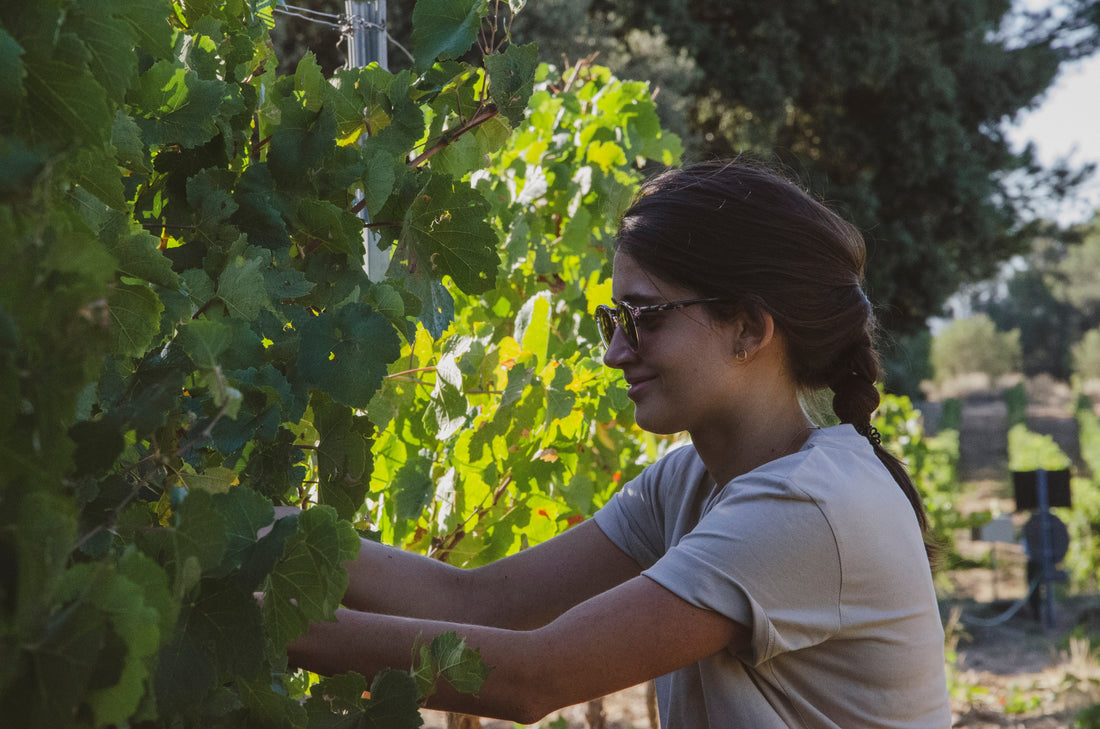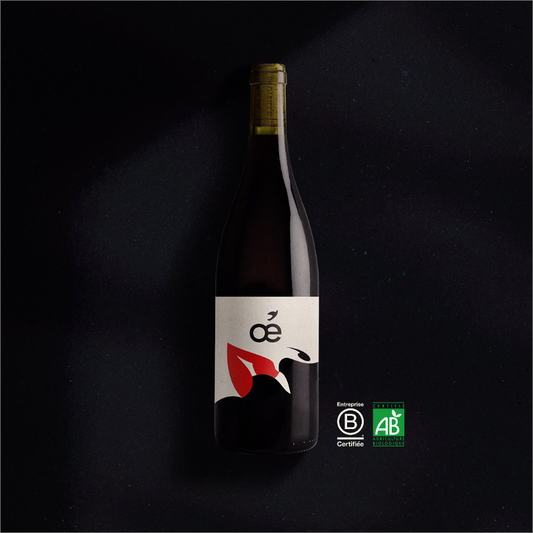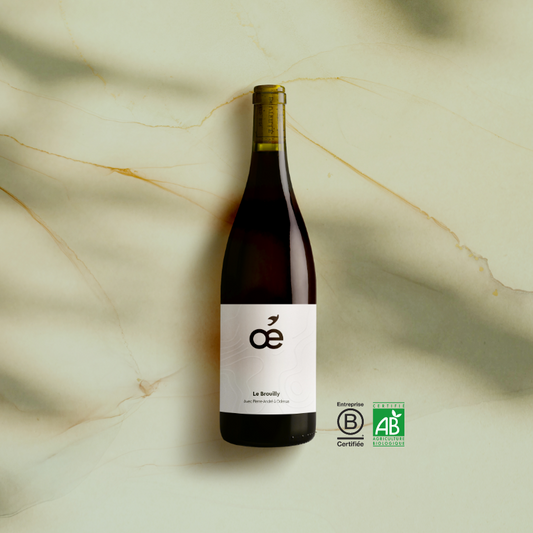Whether you are a wine lover or a novice, we all hear about the harvest at the end of August. We usually all know someone who has participated at least once in their life and the feedback is often very positive. It is a human adventure above all else. So, how is the harvest going in the organic wine estates? We tell you more in this article!
The harvest to make a good organic wine
The vine has 4 seasons , not to be confused with those of Vivaldi! Throughout the summer, the vines soaked up the sun to present their finest fruit towards the end of August . At the beginning of September, it's back to school for the students and it's also the time when the grapes are ripe , ready to be harvested. Throughout the year, the winegrowers have taken care of their vines with particular care and are eagerly awaiting the harvest season . They then put on their harvester hats (often, when you're a farmer you have to be able to wear several hats!), and surround themselves with a team of seasonal workers to pick the long-awaited fruit.
The vine can produce wine for up to 120 years! We then speak of old vine , but not of old skin beware. From the age of 20 we already consider it aging, that's for sure doesn't make us younger, but when experience speaks, we have to admit it, it's pleasant in the mouth.

Depending on the grape varieties , the vintage and the wine region , the harvest period may vary slightly but one thing is certain, it will not take place in May. For example, in 2018, thanks to a rainy spring and a very sunny summer, the grape harvest took place at the end of August, whereas normally it takes place in mid-September. Frost episodes, on the other hand, are the vines ' worst enemies . One of the ancestral techniques to fight against frost is candle lighting to warm up the vineyard , the show is magnificent , we let you see it for yourself
The harvest can be done in an artisanal or industrial way . Today, around 30 to 40% of the harvest is done by hand . It is a long-term job that can sometimes frighten young winegrowers who have just arrived in their vineyard with many hectares of vines and prefer mechanical harvesting using harvesting machines . This method is faster and less tiring but it is also more violent and some grapes, with very thin skins, cannot stand it. In wine-growing regions where climatic conditions are difficult , the winegrower is sometimes forced to use a harvesting machine because the optimal harvesting period is very short during the day and he would not have time to do it by hand. For the well-being of the grapes, he uses the fastest method.
Harvesting by hand makes it possible to directly select the most beautiful bunches and to have a more delicate harvest, better for the grapes. However, this technique is much longer and more tedious. Some appellations require manual harvesting , and some grapes too!
At Oé, we go to one of our winegrowers every year to do the harvest because in addition to helping them, it's a moment of happiness that we like to share as a team. Generally, the harvest period is around 10 to 15 days. It is a time when all the actors of the vineyard put themselves at the service of the vine and come together to combine work and pleasure . You can find on our site a video of the harvest we did last year at Emmanuel. If you have the opportunity to participate in the manual harvest , we advise you to try the harvest experience, good memories are guaranteed!
The harvest period
Beyond the climatic conditions which play an important role in the harvest period , the type of wine sought by the winegrower is also a good indicator. Depending on the region, the harvest takes place later or later. In Bordeaux , the harvest period has been fairly stable for years, while in Burgundy or in the Rhône Valley the trend is changing and winegrowers are turning to early harvesting .
To make a good sweet wine, the winegrowers do what is called late harvesting . Succeeding in making a quality sweet wine requires real know-how because the grapes are harvested " overripe ", that is to say beyond their maturity, and they must be harvested at the right time so that botrytis cinerea brings just the right grape aromas. Botrytis cinerea, also known as noble rot , is a fungus that can be capable of both good and bad. When it is not too present and the weather is favourable, it makes the skin of the grapes thinner, allows the water to evaporate and brings new succulent aromas to the mouth. If left unchecked, the fungus settles on the grapes like a nesting bird and is responsible for the gray hairy coating you can see on spent fruit.

Late harvest vines are selected for their earlier maturity. They are lucky enough to benefit from 4 to 6 more weeks of pure air than vines harvested in the classic harvest.
Once the picking of the grapes is over, the team is very happy and proud of the work done and can return to the cellar. At the estate, the grapes don't take vacations, so neither do the winegrowers. To produce a good wine, you have to quickly move on. The whole bunches are quickly gathered in the cellar to avoid oxidation then put on the sorting table before moving on to destemming where the berries and the stalks are separated. The winemaker lovingly follows all the stages of vinification to offer you a sweet beverage. Yum !
Organic wine estates
Organic wines , biodynamic wines and natural wines come from responsible wineries .
The wine estate includes both the cellar, where the vinification takes place , and the vineyard , the plots on which the vines are planted . In organic viticulture , respect for nature and the well-being of the estate are very important.
You know the expression: “ a healthy mind in a healthy body ”? Well in organic, we think the same. To have a healthy wine, the grapes , vines and soils must be maintained in a healthy and responsible way. There is no spreading of pesticides , only products of natural origin are used to fertilize the soil . By using natural products and methods such as inter-rowing the vineyard plots to let the grass grow, the winegrower ensures that he has a domain full of life. Far from phytosanitary products galore, insects, animals and plants dance to their heart's content in a harmonious environment where everyone finds their place.
At Emma nuel, between heaven and earth, the trees and the vines hold hands like two inseparable friends and present a magnificent spectacle, as the photo testifies!

It is here that our marvelous Châteauneuf-du-Pape is produced . Have you ever tasted it?
Climate change is quite dramatic for biodiversity , especially for vines . The seasons are upset which creates an imbalance in their growth. In organic, biodynamic and natural viticulture , the estate is very sensitive to climatic conditions because there are no chemicals or industrial techniques to protect the vines . Repeated freezing spells and intense heat can be devastating. While strolling through the parks last summer, did you notice that the grass tended to be more chestnut brown than apple green?
Fortunately nature is well done and organic winegrowers rack their brains to find innovative and responsible solutions to deal with these problems. For example, Jean-Etienne Pignier, biodynamic winemaker at Domaine Pignier, is testing new cultivation methods to protect the bunches of grapes from too much sunlight. He tries out the technique of hanging down, which consists of tying the vine differently so that the leaf falls on the grapes and protects them in a natural way. Not stupid the wasp!
Indulge yourself with our selection of red wines , white wines and rosé wines all from the organic estates of our Oé winegrowers. Find our favorite appellations; the Côtes-du-Rhône , the Languedoc , the Bordeaux , the Vaucluse Principality of Orange and the Mediterranean of Provence .





